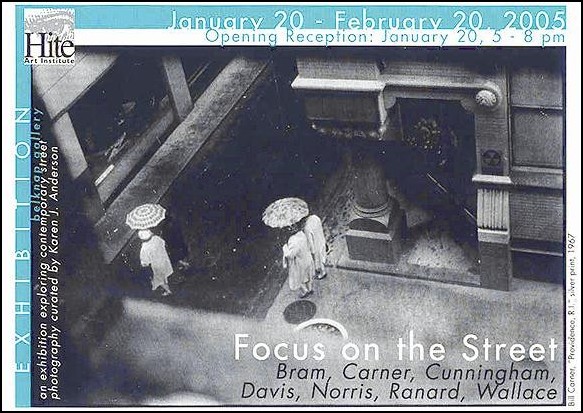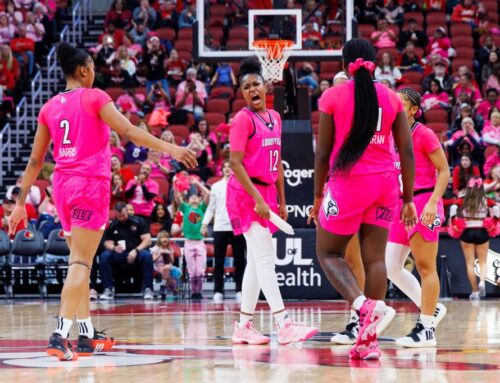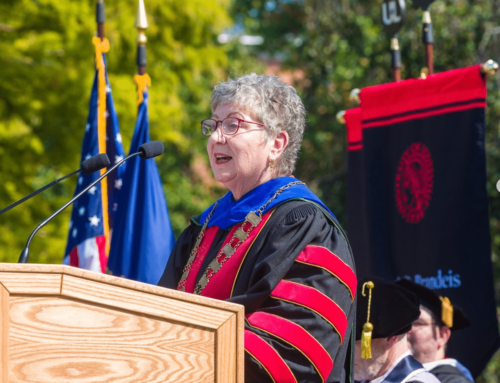A new set of art exhibitions will begin Thursday at the Hite Art Institute with an opening reception from 5 to 8 p.m.
The three new exhibits will present different types of artwork in each of the Hite galleries, from gritty street photography to ancient Roman burial goods to intricate fiber sculptures.
Karen J. Anderson, a graduate student in the Critical and Curatorial Studies program, is one of the curators for this month’s triple-showcase. Her exhibit, titled “Focus on the Street,” will be held in the Morris B. Belknap Gallery and will showcase contemporary street and documentary photography from seven photo artists over the last half-century.
Anderson said she is fascinated by this particular branch of photography. Her intention with presenting these images is to both explain the specialized field of “street photography” and to demonstrate how it has evolved over the last 40 years.
Some of these evolutions should be easy for viewers to pick up on. Only two of the photographers have color prints in the exhibit: Bellarmine University professor Caren Cunningham and social documentary photographer John Ranard. Cunningham in particular is known for her night photos, which depend on existing light sources like neon signs and glowing automobile taillights. Ranard is perhaps the most evolved, using digital cameras and even going so far as to shoot with his Nokia camera phone.
Other, more traditional street photographers featured in the exhibit are Bill Carner, who works in the U of L Photo Archives, and London-based international photographer Richard Bram. The other three photo artists – Eddie Davis, Jack Norris and Roea Wallace – are all Louisville residents and members of the Photographer’s Forum which meets at the Paul Paletti Gallery, 713 E. Market St.
As for the exhibit’s subject matter, Anderson said it ranges from pedestrians to protesters to festival-goers. One photo taken by Davis depicts an ostrich reaching up to peck the camera lens of another photographer. Another, taken by Norris, shows Al Sharpton and Jesse Jackson at the Edmund Pettus Bridge Crossing Reenactment.
But Anderson is adamant in differentiating between “street” and “documentary” photography. Documentary photography, she explained, makes a statement about the time period, humanity or environment portrayed in the image, and thus it attempts to communicate a message to its viewer. Street photography merely involves capturing a spontaneous and unexpected event or moment in the public arena, after which life continues on its path.
“The [street] photos catch scenes of everyday life,” Anderson said. “The photographer must compose his or her photograph in a split second.”
On a Web site dedicated to street photography, http://www.in-public.com, Richard Bram said, “These images are not staged, but [are] visions snatched from reality as I go about my business. This reality is filled with odd juxtapositions, ambient weirdness and unexpected humour that exist for a moment and disappear.”
It is the task of the street photographer, then, to capture these moments before they’re gone.
Along with “Focus on the Street,” two other exhibits will be opening at Thursday’s reception. Linda Gigante’s “Memoria: Roman Funerary Monuments from the Speed Art Museum” will present more than 35 epitaphs, ash urns, burial gifts and grave goods from an actual ancient Roman cemetery, and will occupy the Dario A. Covi Gallery. Another exhibit, on display in the Gallery X space, will feature a collection of fiber vessels from Mary Zena.
The Belknap Gallery, Covi Gallery and Gallery X are three conjoined gallery spaces located in Schneider Hall on U of L’s Belknap campus. Hours for the galleries are 9 a.m.-4 p.m. Monday-Friday, 10 a.m.-2 p.m. on Saturdays and 1-6 p.m. on Sundays. All of the exhibits, as well as Thursday’s opening reception, are free and open to the public. “Focus on the Street,” “Memoria: Roman Funerary Monuments from the Speed Art Museum,” and “Mary Zena – Fiber Vessels” will continue through Feb. 20.






